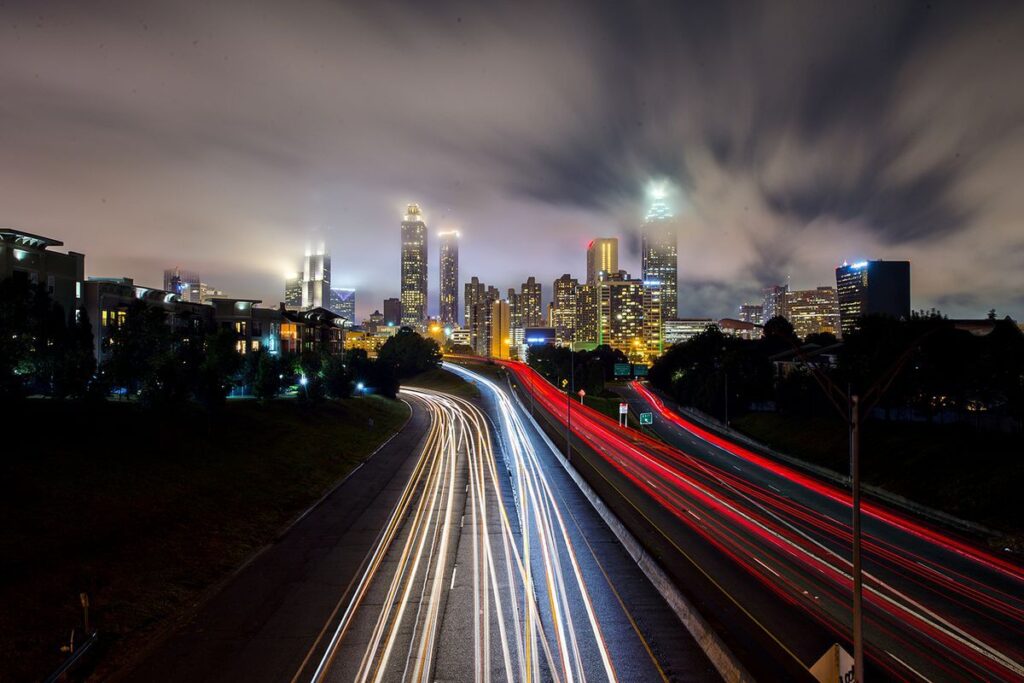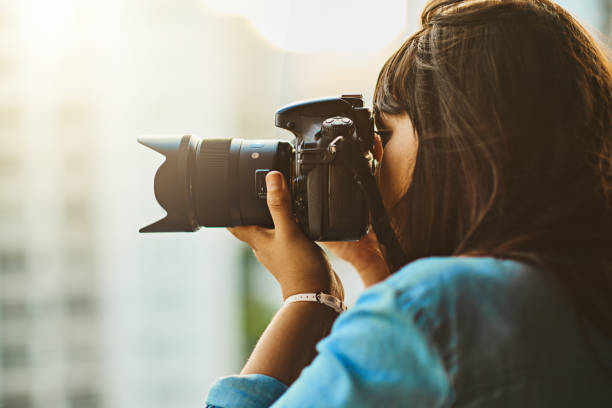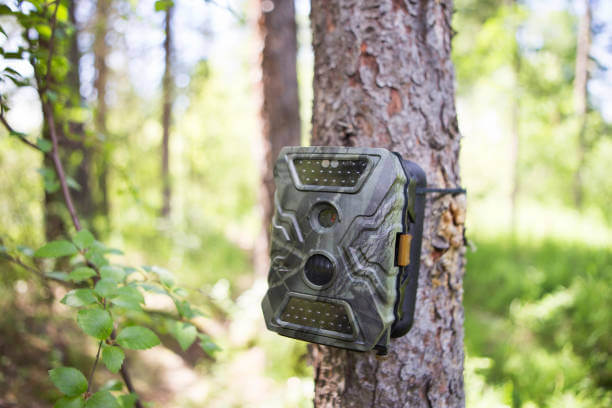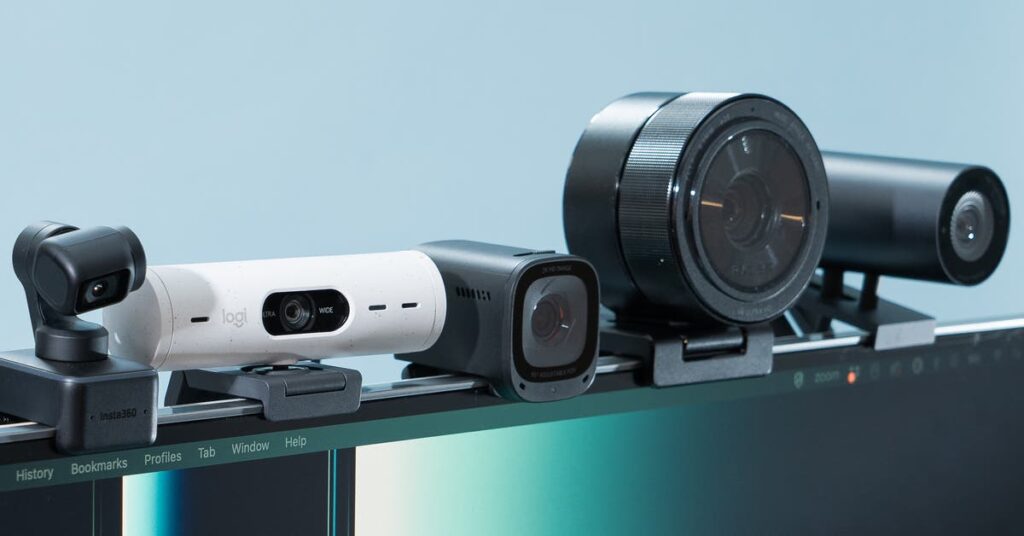What are the Best Video Cameras for Time-lapse? Time-lapse video is a generally new strategy, and it is drilled for the most part by professionals.
There are various sorts of time-lapse videos, but the nuts and bolts are similar.
Pictures are caught over a set period and afterward played back quicker.
Time-lapse video is useful as it can transform boring shots into exciting footage.
Time-lapse photography is a workmanship as well as it is a science.
What’s more, like with any other craftsmanship, there are various strategies and stunts that you can utilize to generate better-looking videos.
What’s more, the most critical one is picking the right camera.
That is why I’m here with the main 6 best video cameras for time-lapse.
Top 6 Best Video Cameras for Time-lapse in 2024 Reviews
1. Nikon D850: A solid and reliable choice giving full creative control of 8K timelapse
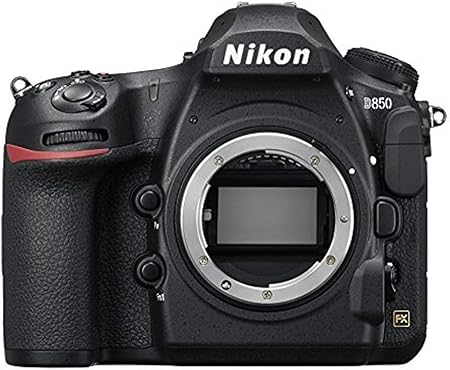
Pros
- Full-frame 45.7MP image sensor.
- 153-point autofocus system.
- 7fps burst shooting.
- Wide ISO range.
- 4K video.
- Large optical viewfinder.
- Tilting touch LCD.
- Dual card slots.
- Bluetooth and Wi-Fi.
Cons
- No built-in flash.
- SnapBridge system needs some work.
Well, it’s an extraordinary expression; it’s California!
The greatest thing on the planet! It has Hollywood!
What’s more, Silicon Valley! What’s more, Napa Valley! What’s more, Yosemite Public Park!
And that large number of sea shores you catch wind of? They’re there as well!
But then I saw it.
It’s impossible for me could catch what makes California so extraordinary in one video.
In this way, rather than attempting to do that, I focused on one piece of California: San Francisco and the Nikon D850.
San Francisco is one of my #1 spots because countless various kinds of individuals meet up together as one notwithstanding their disparities.
A few nerds, hippies, craftsmen, and finance managers live one next to the other, and all appear to be happy with one another’s presence.
If by some stroke of good luck, we could be in every way like that more regularly.
Features
- Model: Nikon D850
- Successful Megapixel: 45.7 MP
- Picture sensor type: Posterior enlightened CMOS Sensor
- ISO range: 64 – 25600
- Shutter speeds: 1/8000
- Capacity Similarity: SD, SDHC, SDXC Memory
- Viewfinder: Optical Viewfinder
- Picture stabilizer: Not Accessible
- Aspect: 146 x 124 x 78.5mm
- Weight: 915g
ISO/Shutter Speed
It was a hazy day in San Francisco.
The sun gradually rose past that certain point, projecting a brilliant sparkle over the cityscape.
I had been arranging this for a long time, but at last, I was here face-to-face to get it going.
I wanted to catch the dawn from four areas around the city and join them into one persistent video showing every area at various snapshots of its ascent.
The ISO was set at 300, and the 1/8000 shutter speed gave me sufficient space to track down reasonable points.
Aperture/Field of View
I arrived at the highest point of perhaps the tallest structure and acknowledged exactly the amount it was there.
It was not difficult to see the reason why individuals had been discussing this city for such a long time.
It was encircled by water on three sides and slopes on two others, similar to something out of a fantasy.
The dusk over the narrows cast a brilliant sparkle across everything; it seemed like a desert spring in an ocean of dim and white.
I set up my camera on a tripod at the top, where I could get an unhampered view of the two sides of the city, and afterward, I recently began taking shots at f/5.6 aperture.
White Balance/Frame Rate
I found a phenomenal spot in the Nightfall Region called Twin Pinnacles, which was expected for my film.
The view was astonishing, and you could see the Brilliant Door Scaffold.
On North Oceanside, there is a recreation area called Washington Square Park, which many individuals are generally near.
That is the reason this spot was ideally suited for the last piece of my time-lapse, as it had a ton of movement consistently during the day.
My camera held onto each footage at blasting 8K goal, capturing 30 frames each second.
The white balance was set at Regular Light Auto K.
For what reason is this camera the best?
It is the best choice for time-lapse videos, as catching your general surroundings was made.
With this camera, you can shoot in 4K goals and make delightful time-lapse videos to encourage your crowd there with you.
Whether you’re shooting nature or city scenes, the D850 can provide the ideal search for your project.
You can likewise use its programmed settings to make things significantly simpler for yourself, or you can use manual settings assuming you need more control over your picture quality.
Conclusion
The main thing that may be mad about this camera is its cost, but assuming you don’t generally mess around with your time-lapse videos, it merits each penny!
It’s a solid and reliable choice, giving full creative control of 8K timelapses.
2. Fujifilm X-T4: A stylish and versatile camera with a dedicated timelapse mode

Pros
- Pro-grade, dust- and splash-protected body
- Excellent EVF
- Articulating LCD
- 15fps mechanical shutter
- Improved battery
- Excellent in-camera film looks and Raw processing
- Stabilized image sensor
- 4K at 60fps
Cons
- No standard headphone jack (though a dongle is included)
- Smallest tracking focus area not that small
The Tongass Public Woodland is quite possibly one of America’s biggest public backwoods in The Frozen North.
The Tongass is where you can discover the absolute most lovely landscape in the US.
It’s a timberland with more than 2 million sections of land and incorporates almost 20% of all excess temperate rainforests in North America.
The Tongass is additionally home to numerous intriguing and imperiled creatures, including wolves, mountain bears, bald eagles, and salmon.
To make a time-lapse video of the Tongass Public Woods that would be a fitting tribute to its regular magnificence, I used Fujifilm X-T4.
I altered the footage into a short film showing the magnificence of the woods at the crack of dawn and nightfall and during daylight hours when no overcast cover was available.
Each shot was carefully arranged so every scene would be impeccably coordinated with its comparing time on screen.
Features
- Model: Fujifilm X-T4
- Viable Megapixel: 26.1 MP
- Picture sensor: X-Trans BSI CMOS sensor
- ISO range: 160 – 12800
- Shutter speeds: 1/200
- Capacity: SD Memory Card, SDHC Memory Card, SDXC Memory
- Viewfinder: Electronic Viewfinder
- Picture stabilizer: Accessible
- Aspect: 134.6 x 92.8 x 63.8mm
- Weight: 607g
ISO/Shutter Speed
I needed a long exposure, so I shot my camera at ISO 160 and 1/8000 second shutter speed.
This implied some light would still come through in any event, when the mists were cloudy and pouring.
The main problem was that your camera couldn’t zero in on anything while at the same time shooting in such low light circumstances.
It’s simply dim!
In this way, I set up my tripod and afterward made a stride back so it wouldn’t zero in on me; it would simply zero in on whatever was straightforwardly before it: the woods.
Aperture/Field of View
I did indeed: First, I drove out to the public timberland and set up my tripod at the edge of an old-development red cedar tree, with the backwoods behind me.
Then, I set my camera on Aperture Need mode and let it run for 10 minutes at f/8.
At last, I took a couple of long breaks between shoots to pause and rest and partake in the landscape before returning to home base with another video clip!
White Balance/Frame Rate
My camera was set at 4K video at 60 fps in auto white balance mode for an even variety of temperatures no matter how you look at it and a consistent tripod.
I began with a fix of the timberland floor, then, at that point, moved into the overhang.
I invested energy shooting the overgrown branches and trunks covering everything from beneath or more.
I didn’t rush; I needed to take as much time as necessary and absorb each second in this supernatural spot.
For what reason is this camera the best?
Its CMOS sensor allows you to take clear photographs and record 4K motion pictures even in low light.
The X-T4 likewise features a 1/8000 shutter speed, incredibly quick for capturing moving items without blurring them out or abandoning trails them.
Besides, this camera offers a few modes to catch time-lapse groupings and single photographs.
You can position it to naturally take photographs consistently or hourly, making it simple to make lovely time-lapse videos without physically taking pictures day in and day out.
Conclusion
On the off chance that you’re searching for a camera that can assist with capturing some unimaginable time-lapses, then the Fujifilm X-T4 may be an ideal one for you.
It’s a stylish and versatile camera with a dedicated timelapse mode
3. Olympus OM-D E-M10 Mark IV: Incredibly compact and affordable but still packs a punch

Pros
- 20MP Micro Four Thirds imaging
- 4K video
- 5-axis sensor stabilization
- 8.7fps continuous drive
- Built-in flash
- Many lenses available
- In-camera USB charging
- Slim, stylish body
Cons
- Doesn’t support add-on microphones
It’s been bound to happen, but I at last got to shoot some time-lapse video of that monstrous moon shutting out the sun.
I’ve been sitting tight during the current day for a long time, perhaps years.
Also, it was worth the effort.
It was worth the effort.
The second the eclipse began, it resembled nothing I’d at any point seen.
It resembled the sky was ablaze, with these fabulous varieties and dashes of light all over the place.
And afterward, I hit entirety!
At the point when the moon covered the sun, it became dim as night.
I was unable to accept how wonderful everything checked that second out.
I’m so happy I had my Olympus OM-D E-M10 Mark IV there to catch each second of it!
Features
- Model: Olympus OM-D E-M10 Mark IV
- Compelling Megapixel: 20.3 MP
- Picture sensor type: Four-Thirds MOS Sensor
- ISO range: 200 – 25600 (extended)
- Shutter speeds: 1/16000
- Capacity type: SD, SDHC, SDXC Memory
- Viewfinder: EVF Viewfinder
- Picture stabilizer: In-self-perception Adjustment
- Aspect: 122 x 84 x 49mm
- Weight: 383G
ISO/Shutter Speed
From the outset, I could see a splendid spot through my viewfinder.
But as the Moon moved before it, shutting out its light, I could see an ever-increasing number of subtleties on its surface.
It seemed to be a goliath orange ball, a fat pumpkin with a sparkling face.
I changed my ISO to 160 while setting the shutter speed at 1/2000.
Then, I shot a few shots like clockwork, expecting to get its adjustment of size from start to finish.
Aperture/Field of View
I set up my camera, focused on the sun, opened the aperture to F/3.5, and began shooting.
Furthermore, there it came: the moon gradually moving among me and the sun like some divine drapery ascending on a phase play while crowds around me cheered fiercely and took photographs from their telephones or cameras.
It was a lot for me to take in; the sight was so gorgeous, so great. If I could hold up this second always, that would be enough for anybody who loves science and nature as much as myself!
White Balance/Frame Rate
The weather conditions were awesome.
It was clear and radiant once more, but not excessively hot or damp.
A huge number of individuals were around me, but they were by and large present for a similar explanation: to see something so lovely and intriguing that it happens once at regular intervals (or longer!).
I took some staggering time-lapse videos that day with my camera.
It has a sensor that allows me to shoot video at 4K goals at 30 frames for each
For what reason is this camera the best?
This camera is truly outstanding in its group regarding performance, price, and features.
It has many high-level features that make it remarkable and stand apart from different cameras in a similar classification.
The Mark IV has another sensor that permits it to catch top-notch videos at a quick rate of 30 frames each second.
This makes it quite possibly one of the most remarkable cameras accessible today.
The camera’s pictures look spectacular in any event, when viewed on a huge screen or television set, making it ideal for professionals working with enormous photographs day in and day out.
Conclusion
Whether you’re shooting a time-lapse of your espresso fermenting or a day at the ocean side, this camera will hit the nail on the head without fail.
It’s incredibly compact and affordable but still packs a punch.
4. Sony A7 III: Pro performance at a truly reasonable price point and excellent battery life
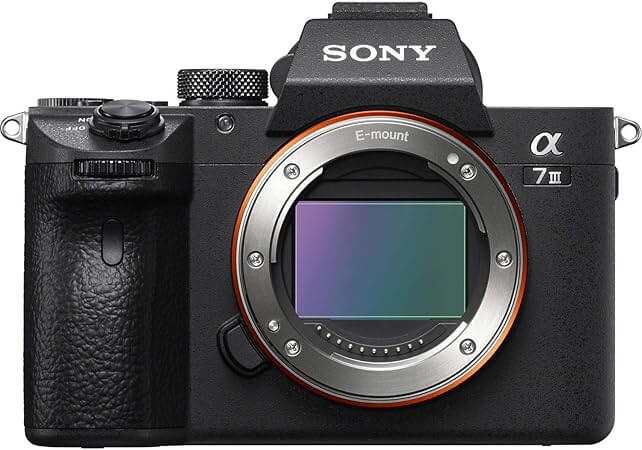
Pros
- 24MP full-frame BSI sensor.
- 10fps with tracking.
- 5-axis stabilization.
- 4K HDR video.
- Silent shooting is available.
- Tilting touch LCD.
- Dual SD slots.
- Vastly improved battery.
- Focus joystick.
- Flat profiles are available.
Cons
- Only one card slot is UHS-II.
- No in-body flash.
- No PC sync socket.
The stars have forever been one of my #1 things to watch.
I love the delightful way they appear as dabs, but when you take a gander at them through a telescope, you see their wonderful shapes and tones.
I needed to catch the excellence of the stars in a time-lapse video, so I went out one night with my camera and tripod to track down the ideal spot.
My companion and I cruised all over for some time until we found a field that seemed as though it would be great for our motivation: it was far enough away from any streetlights or houses that we wouldn’t have any light contamination interfering with our photographs.
I set up my Sony A7 III and began taking pictures like clockwork for three hours.
Like that, I could have a few pleasant chances of how various pieces of the sky changed over the long run.
Features
- Model: Sony A7 III
- Compelling Megapixel: 24.2-MP
- Picture sensor type: Full-Frame CMOS Sensor
- ISO range: 100 – 51200
- Shutter speeds: 1/8000
- Capacity Similarity: SD, SDHC, SDXC Memory
- Viewfinder: Electronic Viewfinder
- Picture stabilizer: 5-Axis Adjustment
- Aspect: 126.9 x 95.6 x 73.7mm
- Weight: 650g
ISO/Shutter Speed
The principal thing I did was pick my ISO range.
My camera has an ISO range of 100 – 51200 and a 1/8000 shutter speed.
Since the night sky is dull, I expected to use a low ISO so my camera wouldn’t be overpowered by the light getting from the perspective.
The higher the ISO is, the more delicate it will be to light.
I additionally needed to guarantee that my shutter speed was sufficiently fast to catch all the development overhead without blurring or streaking impacts.
Aperture/Field of View
The night sky was an amazing sight.
The stars were so splendid and clear it was like you could connect and get one.
It seemed like I was remaining in a goliath clock, with the stars turning around me like hands on a clock face.
I set up my camera on a tripod and used Aperture Need mode.
I had some control over how much light entered the camera by changing the aperture and shutter speed settings.
White Balance/Frame Rate
I used my 4K 30 fps camera with custom white balance settings.
This would permit me to catch every one of the shades of blue and purple overhead without stressing over physically changing any settings during post-processing.
I set up my tripod and stepped through a few examination shots with various exposure times, attempting to find one that best caught the movement of the stars while still having the option to see them enough so they didn’t mix into a foggy wreck.
For what reason is this camera the best?
It flaunts a great 24-megapixel and a super quick self-adjust system that can shoot 4K video at up to 30 frames each second.
But where it sparkles is in its capacity to catch time-lapse videos.
As it features such a high goal thus numerous pixels, it can take multiple photographs each second, so your subsequent time-lapse video will be incredibly smooth and fresh.
Additionally, this model accompanies worked-in Wi-Fi usefulness that permits you to move pictures straightforwardly from your camera to your telephone or PC with practically no problem.
Conclusion
On the off chance that you’re searching for an extraordinary all-around camera that can twofold as both stills and a video device, consider getting yourself a Sony A7 III!
It performs well at a truly reasonable price and has excellent battery life.
5. Nikon Z6: A robust mid-range mirrorless option for enthusiasts
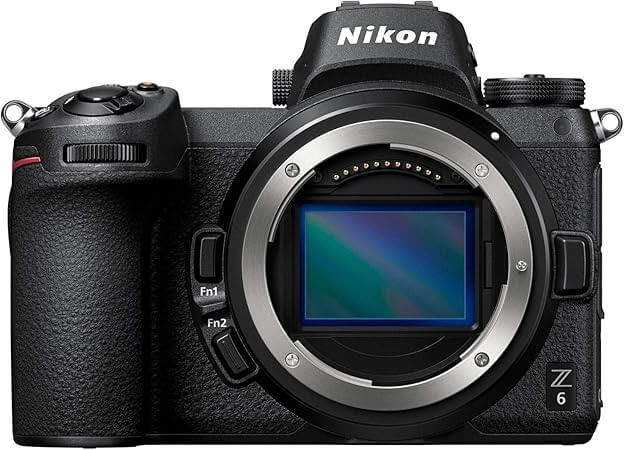
Pros
- 24MP full-frame sensor.
- 90 percent autofocus coverage.
- 12fps Raw continuous shooting.
- In-body image stabilization.
- Tilting touch LCD.
- Big, sharp EVF.
- Compatible with Nikon SLR accessories.
- 4K video.
- Dust and splash-resistant.
- Bluetooth and Wi-Fi.
Cons
- Single memory card slot.
- No PC Sync socket.
At some point, I was outside shooting a time-lapse video of blossoms sprouting.
I invested a lot of energy setting up my camera and tripod, it was consistent to guarantee it.
I needed to catch the entire process of the blossoms opening up, but so many variables could influence the film: wind, downpour, and bugs; I didn’t know how long I’d have the option to leave my camera there before bringing it down!
But I persisted and continued to film with Nikon Z6.
It took some time surprisingly lengthy for the primary bloom to open, but when it did, it was worth the effort; how the petals collapsed outwards and expanded into their full structure was flawless!
Features
- Model: Nikon Z6
- Powerful Megapixel: 24.5 MP
- Picture sensor type: Full-Frame Back-Enlightened CMOS Sensor
- ISO range: 100 – 25600
- Shutter speeds: 1/8000
- Capacity Similarity: SD, SDHC, SDXC Memory
- Viewfinder: Quad-VGA Electronic Viewfinder
- Picture stabilizer: In-self-perception Adjustment
- Aspect: 134 x 100.5 x 67.5mm
- Weight: 1175g
ISO/Shutter Speed
I began my shoot by snapping a picture of this fix of soil with some grass before me; it was just about getting sufficient light regarding my matter to get a respectable picture.
The ISO was changed somewhere in the range of 400 and 1200 while the shutter speed was at 1/8000.
Then, as the sun rose and radiated through the mists (it was a cloudy morning), I snapped another picture, focusing on the fix of soil and grass straightforwardly before me.
The sunlight made everything look more splendid and more lively than previously!
Aperture/Field of View
The sun was setting, projecting brilliant beams over the whole scene; it was delightful.
As I kept on shooting at f/2.8 aperture, I saw different blossoms starting to sprout around me.
They were various shapes and sizes, but each had interesting magnificence.
I was unable to hold back to see what they would resemble after they got done with sprouting!
As night fell and the moon transcended every one of us, it illuminated the scene more than ever.
It seemed like we were in our reality, where nobody could let us know how we could or couldn’t manage nature’s magnificence encompassing us.
White Balance/Frame Rate
I had been standing by the entire night for the blossoms to sprout and uncover their genuine nature.
Also, when the sun broke into the great beyond, I began shooting.
It was so lovely: how they spread out like little explosions of variety, how their petals mirrored the light into my focal point; I could barely handle it!
I was fortunate to such an extent that day to have the option to catch this mind-boggling second in time at 4K 30 fps.
In the interim, the white balance on my camera was set to auto.
For what reason is this camera the best?
It can shoot in 4K at 30 frames each second, the norm for making top-notch videos.
It likewise has an extraordinary self-adjust system that allows you to catch your subject clearly and accurately.
What’s more, if you need to get extravagant with your video, the Z6 will allow you to do that as well; it can take stills while recording video so you can make your stop-movement or cinemagraphs.
It has every one of the features you’d expect from a professional camera to say the very least!
Conclusion
This is the camera on the off chance that you’re searching for a device to assist you with making lovely time-lapse videos effectively and really.
It’s a robust mid-range mirrorless option for enthusiasts.
6. Canon EOS Rebel SL3: Automate the timelapse process with this beginner-friendly DSLR
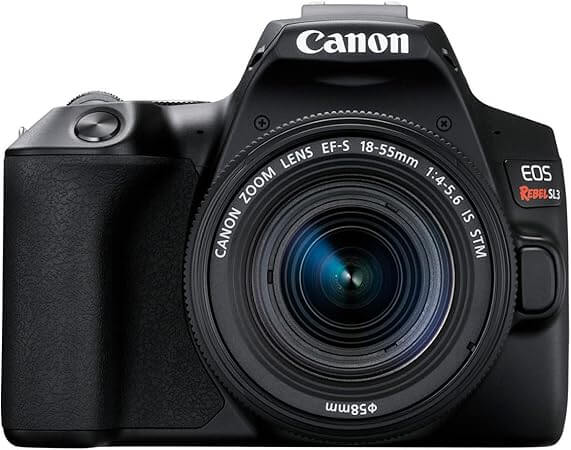
Pros
- Compact.
- Vari-angle touch LCD.
- 1080p video with good autofocus.
- External mic support.
- Wi-Fi and Bluetooth.
Cons
- Not as capable as mirrorless alternatives.
I live in the mountains, so awakening to see every one of the snow-shrouded trees is entirely typical.
But earlier today was unique.
I got up at 4 AM and glanced through my window.
I saw something I had never seen: a sweeping white covering everything except the actual highest points of the trees.
It was so gorgeous, but it likewise disheartened me because I realized I would never catch this second on camera.
That is the point at which I concluded that today was the day that I would make a time-lapse video of a snowfall.
I got my Canon EOS Rebel SL3, set it up externally on a tripod, and went for about hours while it recorded.
At the point when I returned and checked the footage, I was blown away; it appeared as though something out of Frozen!
Features
Model: Canon EOS Rebel SL3
Successful Megapixel: 24.1-MP
Picture sensor type: APS-C CMOS Sensor
ISO range: 100 – 25600
Shutter speeds: 1/4000
Capacity Similarity: SD, SDHC, SDXC Memory
Viewfinder: Optical Viewfinder
Picture stabilizer: Not Accessible
Aspect: 122.4 x 92.6 x 69.8mm
Weight: 449g
ISO/Shutter Speed
The night was chilly, but the view was dazzling.
It was shady, and I didn’t figure I would have a decent chance.
Thus, rather than giving up, I chose to take a stab at something else: lowering my shutter speed.
From the outset, I brought it down to 1/4000 seconds, which is quickly enough for the vast majority but not really for me.
In this way, I brought down it over and over until I at long last figured out a perfect balance: 100 – 25600 ISO range and 1/4000 shutter speed!
Aperture/Field of View
I continued to stroll until I arrived at my spot, an enormous stone neglecting miles of immaculate land covered in white fine snow.
It was exactly what I had expected unadulterated quietude and excellence.
I set up my tripod and glanced through my f/6.0 aperture at the tremendous expanse beneath me; it appeared to be unending in its profundity and grandness.
I focused on a solitary tree somewhere far off. I began shooting consistently, many frames, until at long last exhaustion dominated and constrained me to rest again before dawn and, hopefully, one more opportunity at capturing this second.
White Balance/Frame Rate
I needed to ensure that the lighting conditions were ideal for shooting.
It’s useless to catch something if you can’t see it!
I set up my camera on its tripod, pointing towards the sky to catch everything clearly with next to no movement obscure from development before the focal point.
Then I started recording at 25 fps and set my white balance to programmed so everything would look normal while being shot some other time when altering this multitude of clips together into one long video clip showing a time-lapse view from midnight until sunrise.
For what reason is this camera the best?
The SL3 is a strong DSLR with a 24.1-megapixel APS-C CMOS sensor and a DIGIC 8 picture processor that can catch high-goal pictures and HD video in any circumstance.
It has an ISO range of 100-25600 (expandable to 51200) and can shoot up to 25 frames each second.
The camera has an excellent self-adjust system that can follow moving subjects, and it accompanies a few implicit settings for various sorts of shots and manual controls for cutting-edge users who need more control over their shots.
Conclusion
The plan is smooth and modern, with a little body that is not difficult to hold.
The buttons are all around and naturally positioned, so you can become accustomed to them rapidly.
You can automate the timelapse process with this beginner-friendly DSLR
Buying Guide for the Best Video Camera for Time-Lapse
Choosing the best video camera for time-lapse photography requires careful consideration of various features and specifications. Time-lapse shooting is a unique process, often requiring long hours of continuous shooting, precise control over intervals, and high-quality image capture. This guide will walk you through the key factors to consider when selecting the best time-lapse camera for your needs.
1. Resolution Quality
When capturing time-lapse footage, the resolution of the camera plays a crucial role in the clarity and detail of the final video. Look for cameras that offer at least 4K resolution to ensure sharp and professional-quality footage. If your time-lapse involves intricate details, such as cityscapes or natural landscapes, higher resolutions like 5.3K or 8K can provide stunning results.
2. Intervalometer
An intervalometer is a tool that allows you to set intervals between shots, which is essential for time-lapse photography. Some cameras come with a built-in intervalometer, while others require external accessories. Built-in intervalometers are convenient, allowing you to program the intervals directly from the camera without needing additional equipment.
3. Battery Life
Time-lapse videos require long shooting sessions, so battery life is a critical factor. Look for cameras with extended battery life or those that allow you to swap batteries easily during a shoot. Some models also offer external power solutions, such as power banks, for uninterrupted shooting over long periods.
4. Low-Light Performance
Many time-lapse projects take place at night or in changing light conditions, such as sunsets and sunrises. Choosing a camera with good low-light performance is important for capturing high-quality footage during these periods. Cameras with high ISO capabilities and large sensors tend to perform better in low light, ensuring clear and noise-free images.
5. Weather Resistance and Durability
Since time-lapse often involves outdoor shooting, it’s important to consider a camera’s durability and weather resistance. A camera that is waterproof, dustproof, or freeze-proof will ensure that it can handle harsh environmental conditions, such as rain, snow, or high winds.
6. Lens Options
For the best time-lapse results, the ability to switch lenses can be a game-changer. Cameras that support interchangeable lenses allow you to choose the ideal lens for your scene, whether it’s a wide-angle lens for landscapes or a telephoto lens for capturing distant details. Mirrorless and DSLR cameras often offer a wider selection of lens options than compact or action cameras.
7. Image Stabilization
Image stabilization is particularly important if you’re planning to shoot time-lapse videos in windy or shaky environments. Cameras with built-in stabilization can help reduce camera shake, resulting in smoother footage. This feature is especially beneficial for handheld or motion time-lapse shots.
8. Portability and Size
Portability is another key consideration, especially if you’re shooting time-lapse videos in remote locations or while on the move. Compact action cameras like GoPro models are lightweight and easy to transport, while larger DSLRs or mirrorless cameras may offer better image quality but can be bulkier to carry.
9. Storage and Memory
Time-lapse photography can consume a large amount of storage due to the number of images or video files involved. Ensure that your camera supports large-capacity memory cards and has a fast data-writing speed. Some cameras also offer dual memory card slots, allowing for extended recording sessions without having to swap cards.
10. Price and Budget
Finally, consider your budget. Time-lapse cameras range in price from affordable action cameras to high-end professional models. Set a budget that meets your needs and prioritize the features that are most important for your specific time-lapse projects.
FAQs About the Best Video Camera for Time-Lapse
1. What is the most important feature to look for in a time-lapse camera?
The most important feature is the intervalometer, which controls the time between each shot in a time-lapse sequence. Many cameras come with built-in intervalometers, but if they don’t, you’ll need an external one. Additionally, high resolution and long battery life are key for ensuring quality and extended shooting time.
2. Can any camera be used for time-lapse photography?
Technically, yes, any camera can be used for time-lapse, but not all are ideal. Cameras with manual control over intervals, robust battery life, good low-light performance, and high-resolution output are better suited for producing professional time-lapse videos. A camera without an intervalometer or one with limited battery life may not be as convenient.
3. Do I need a specific lens for time-lapse photography?
No, you don’t need a specific lens, but the type of lens you choose can affect your results. Wide-angle lenses are great for capturing large landscapes, while telephoto lenses are better for isolating specific subjects. A lens with manual focus is recommended to avoid focus shifting during long shoots.
4. How much battery life is needed for time-lapse videos?
Battery life is crucial for time-lapse shooting since it requires capturing hundreds or thousands of images over a long period. Look for cameras with extended battery life or those that allow for external power sources like battery grips or power banks. Action cameras like the GoPro often have longer-lasting battery options, while DSLRs and mirrorless cameras may need extra batteries.
5. Can I shoot time-lapse at night?
Yes, you can shoot time-lapse at night, but you’ll need a camera with excellent low-light performance. Cameras with larger sensors, higher ISO capabilities, and good noise reduction will perform better in low-light conditions. Night-sky time-lapses are a popular choice, but require careful attention to camera settings.
6. What’s the difference between time-lapse and hyperlapse?
Time-lapse involves capturing frames from a fixed location over a set period, while hyperlapse is a form of time-lapse that involves moving the camera over distances between shots. Many modern cameras with built-in intervalometers can handle both techniques, but hyperlapse requires more stabilization and careful planning.
7. Do I need a tripod for time-lapse photography?
Yes, a tripod is essential for keeping your camera stable during long shoots. Even slight movements can ruin a time-lapse sequence. For hyperlapse or motion time-lapses, you might need additional stabilizing gear, such as a gimbal or motorized slider.
8. How much storage is needed for time-lapse photography?
Time-lapse photography involves capturing a large number of images, so high-capacity memory cards are a must. Depending on the resolution and interval settings, you may need anywhere from 64GB to 256GB of storage or more. Cameras with dual memory card slots can help avoid interruptions during long shoots.
9. What resolution is best for time-lapse videos?
For high-quality time-lapse videos, aim for at least 4K resolution. Higher resolutions like 5.3K or even 8K are becoming more common and can provide ultra-detailed footage, especially for large landscapes or intricate scenes.
10. Which camera brands are best for time-lapse?
Some of the top camera brands for time-lapse include GoPro (for action time-lapse), Sony (for mirrorless options), Canon (for professional DSLR and mirrorless cameras), and Nikon. These brands offer cameras with strong intervalometer settings, long battery life, and great image quality.
CONCLUSION:
The best camera for time-lapse photography should offer a combination of high resolution, long battery life, and customizable shooting intervals. Whether you’re a professional photographer or an enthusiast, the right camera will allow you to create stunning time-lapse videos that capture the beauty of your subject over time. Take into account the environment, the specific shots you want, and your overall budget to find the perfect camera for your needs.
Okay, folks, that closes every one of the cameras we will talk about today in this article.
Do you folks have any experience with these cameras? What do you think about them?
Which is your Best Video Camera for Time Lapse?
Is there a camera I didn’t specify in this article that you love using for large-scale photography?
Could you kindly leave your considerations and remarks underneath?
You might also like…
5 Best Smartwatches For Hunting And Fishing
8 Best Drones for Night Videos
How to Switch AirPods Between Devices

